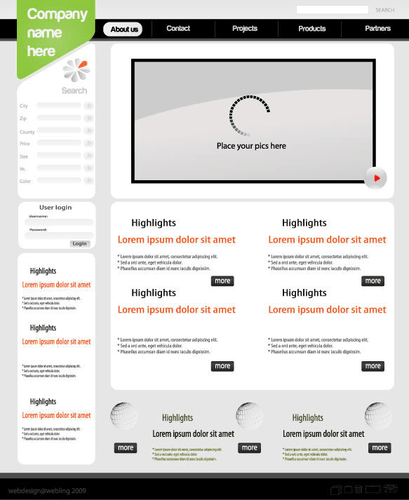
The most commonly used method of depreciation is straight-line; it is the simplest to calculate. Depreciation is the accounting process of spreading the cost of a tangible asset over its useful life. It shows how an asset’s value decreases over time due to wear and tear, usage, or obsolescence. Depreciation allows businesses to match the expense of using an asset with the revenue it helps generate, which provides more accurate financial reporting. Double-declining balance depreciation applies a fixed rate to an asset’s decreasing book value each year.
Advanced Topics in Double Declining Balance Depreciation

An accelerated depreciation method, this approach applies a fixed percentage to the asset’s remaining book value each year. It results in higher depreciation in the early years and smaller amounts later. It’s useful for assets like advanced machinery or high-tech equipment that lose value quickly. Double declining balance depreciation represents an accelerated depreciation method that allows you to maximize your deductions during the initial years of an asset’s service life.
- Depreciation affects physical asset values; amortization impacts intangible asset costs.
- This results in a steep decline in value in the first few years, tapering off over time.
- Then, calculate the straight-line depreciation rate and double it to find the DDB rate.
- Accelerated depreciation allocates more expense in early years; straight-line spreads cost evenly over the asset’s useful life.
- Depreciation formulas in Excel help businesses systematically allocate asset costs over time, ensuring accurate financial reporting and compliance with tax regulations.
- Tax preparers must ensure correct application of depreciation methods and compliance with IRS rules to avoid audits or penalties.
What is a Contra Account?
Section 179 applies to tangible personal property and certain qualified improvements used in active trade or business. To qualify, the property must be purchased and placed in service during the tax year. The maximum deduction for 2025 is $1,160,000, with a phase-out beginning at $2,890,000 of total equipment purchases. For example, the ADS recovery period for nonresidential real property is 40 years compared to 39 years under MACRS but uses the straight-line method throughout. Common methods include the Double Declining Balance and Sum-of-the-Years-Digits. Seek advice from an expert who knows your business requirements before double declining balance formula making any tax decisions.
Double the straight-line rate

Critics argue that it may not accurately reflect an asset’s loss of value over time and that it complicates financial analysis due to its front-loaded expense recognition. Because it front-loads expenses, you may need to account for a higher expense in the initial years of an asset’s life when budgeting. Embrace the method that best suits your business’s needs, and let it steer you towards a future of well-managed assets and financial clarity. After all, depreciation shouldn’t be a drawback; with the right approach, it can become a strategic advantage, paving the way for sustainable growth and financial success. By correctly calculating the depreciation each year, accountants can accurately reflect the diminishing value of an asset on the company’s financial statements. Business owners do not ledger account want to worry about depreciation schedules and various depreciation methods.
- The double declining balance method applies twice the straight-line depreciation rate to the asset’s book value each year.
- Moreover, policy orientation also plays a crucial role in the decoupling between construction land use and carbon emissions.
- This pattern continues until the book value approaches the salvage value, ensuring depreciation never exceeds the asset’s worth.
- However, the 20% is multiplied times the fixture’s book value at the beginning of the year instead of the fixture’s original cost.
- Standard declining balance uses a fixed percentage, but not necessarily double.
When and Why to Use the Double Declining Balance Depreciation Method

He is a CFA charterholder as well as holding FINRA Series 7, 55 & 63 licenses. He currently real estate cash flow researches and teaches economic sociology and the social studies of finance at the Hebrew University in Jerusalem.
- Seek advice from an expert who knows your business requirements before making any tax decisions.
- When you drive a brand-new vehicle off the lot at the dealership, its value decreases considerably in the first few years.
- For the past 52 years, Harold Averkamp (CPA, MBA) hasworked as an accounting supervisor, manager, consultant, university instructor, and innovator in teaching accounting online.
- In accelerated depreciation, book value declines faster in the earlier years, nearing the salvage value more rapidly.
- What it paid to acquire the asset — to some ultimate salvage value over a set period of years (considered the useful life of the asset).
Financial Reporting
Since the double declining balance method has you writing off a different amount each year, you may find yourself crunching more numbers to get the right amount. You’ll also need to take into account how each year’s depreciation affects your cash flow. (You can multiply it by 100 to see it as a percentage.) This is also called the straight line depreciation rate—the percentage of an asset you depreciate each year if you use the straight line method. Nevertheless, businesses should carefully evaluate their specific circumstances and asset types when choosing a depreciation method to ensure that it aligns with their financial objectives and regulatory requirements. Understanding the pros and cons of the Double Declining Balance Method is vital for effective financial management and reporting.
Partner links from our advertiser:
- Real-time DEX charts on mobile & desktop — https://sites.google.com/walletcryptoextension.com/dexscreener-official-site-app/ — official app hub.
- All official installers for DEX Screener — https://sites.google.com/mywalletcryptous.com/dexscreener-apps-official/ — downloads for every device.
- Live markets, pairs, and alerts — https://sites.google.com/mywalletcryptous.com/dexscreener-official-site/ — DEX Screener’s main portal.
- Solana wallet with staking & NFTs — https://sites.google.com/mywalletcryptous.com/solflare-wallet/ — Solflare overview and setup.
- Cosmos IBC power-user wallet — https://sites.google.com/mywalletcryptous.com/keplr-wallet/ — Keplr features and guides.
- Keplr in your browser — https://sites.google.com/mywalletcryptous.com/keplr-wallet-extension/ — quick installs and tips.
- Exchange-linked multi-chain storage — https://sites.google.com/mywalletcryptous.com/bybit-wallet — Bybit Wallet info.